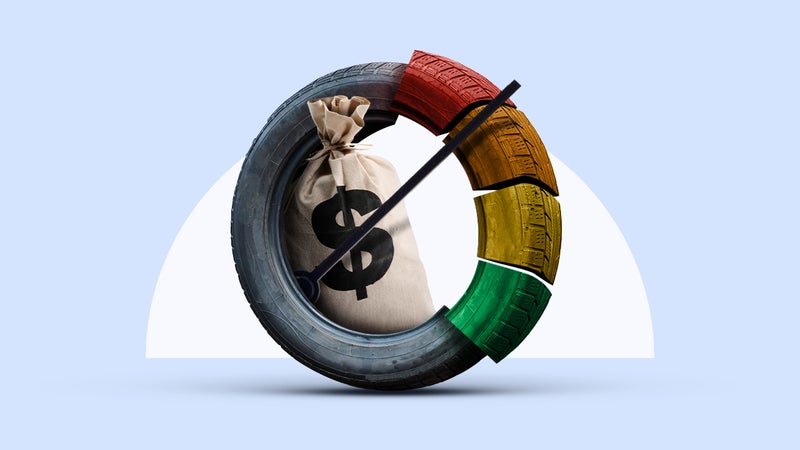When should you refinance your car? When to apply and when to wait

The Bankrate promise
At Bankrate we strive to help you make smarter financial decisions. While we adhere to strict , this post may contain references to products from our partners. Here's an explanation for .
Key takeaways
- Refinancing your car loan can be a good idea if it allows you to save money on interest, but it's not the right financial move for every borrower.
- The best time to refinance is when interest rates have dropped or your credit score and DTI have improved.
- You should not refinance your car if you are close to paying off your loan, owe more than the car is worth or if interest rates are high.
- Other factors to consider before refinancing include the age and mileage of your car, potential fees and penalties and other options like a car loan modification.
Refinancing means replacing an existing loan with a new one, typically through a different lender. Most use it to reduce their monthly payments by getting a lower rate or extending their loan term. But is the process worth it for you?
Auto loan refinancing is generally a good idea if it allows you to save money on interest. But it’s not always a wise financial move, especially when interest rates are high. Think carefully before applying.
When should you refinance your car?
There is no best time to refinance your car loan — if it saves you money, it is a good time.
To illustrate, imagine the remaining balance on your auto loan is $18,000, the current monthly payment is $450, and you have four years remaining on the loan term. You get approved for a four-year auto loan, but the interest rate will be 5 percent instead of the 8 percent you currently pay.
Your monthly payment will drop to $414.53, and you’ll save $1,702.69 in interest over the loan term by refinancing.
There are a few situations where refinancing makes the most sense.
When rates have dropped since your last auto loan
Refinancing is a good move when average rates are dropping. Unfortunately, auto rates have steadily risen throughout 2023 and into 2024. Our experts forecast rates will cool off slightly for good-credit borrowers but generally remain elevated through 2024.
Auto loan refinancing rates tend to track with used vehicle rates, which are currently sky-high.
The average interest rate for a used car loan with a 48-month term was 7.70 percent as of late July 2023. The average rate for the same type of loan is now 8.51 percent as of March 2024.
Rates may stay high in the near future. You may still find better rates by getting a loan with a shorter repayment term and keeping your credit score high.
When your credit score and DTI has improved
Even if market rates haven’t changed drastically, improving your credit score may be enough to get a lower rate. You may qualify for better loan terms, reducing your monthly and overall costs. A borrower with a better credit score can secure more competitive rates.
Here are the average rates for each credit score range, according to Experian’s fourth-quarter 2023 data.
| Personal FICO score | Average interest rate for used car loans |
|---|---|
| 781 to 850 | 7.66% |
| 661 to 780 | 9.73% |
| 601 to 660 | 14.12% |
| 501 to 600 | 18.89% |
| 300 to 500 | 21.55% |
A lower debt-to-income ratio (DTI) can also result in better rates. Pay down any existing debt and calculate your DTI to determine where you land ahead of refi.
When you received your initial loan from the dealer
Dealers tend to charge higher rates than banks and credit unions to make a profit. If you took out your initial loan through dealer-arranged financing, refinancing with a different lender could get you a lower rate.
When you’re struggling to keep up with payments
Refinancing a car loan can sometimes get you a more affordable car payment even without a lower interest rate. If your budget is tight and you need to reduce your car payment, you could refinance your loan to a longer repayment term. But expect to pay more in interest because you are extending the loan.
When to not refinance your car
Refinancing a car loan isn’t always the right choice, especially under these circumstances.
When you’re close to paying off your loan
If you are nearing the end of your loan term, refinancing may not save you money. Instead, you should stick with it unless you desperately need to extend your loan term to reduce your monthly payment.
Lenders have minimum and maximum balance thresholds to be eligible for refinancing. The minimum typically falls between $3,000 and $7,500.
Most lenders also have a minimum loan term of 24 or 36 months. If you have fewer months than that remaining on your car, you’ll have to extend your term when you refinance. Be wary. While a longer loan term will mean a lower monthly payment, you will also pay more interest.
When you owe more than the car is worth
The further you are in the loan, the more likely you owe more on the car than it is worth. This is also called being “underwater” or upside down — and it will make it hard to refinance. Since your car secures your loan, lenders know they won’t be able to recoup the loan’s full amount if you default while upside-down.
When interest rates are high
You may pay more if you refinance in the current market environment. The Federal Reserve has been working to control inflation by keeping a high Federal Funds rate, which in turn causes interest rate increases on everything from credit cards to car loans. The average APR for used vehicles was 11.93 percent as of 2023’s fourth quarter, according to Experian. If you got an average rate on your existing loan, a better rate may be hard to find.
When your car doesn’t meet lender requirements
Lenders determine eligibility differently. Before you refinance, check the requirements for you, your vehicle and your current loan. Most lenders will require:
- A regular source of income, a low debt-to-income ratio and good credit.
- Proof of residence, such as a lease agreement, mortgage statement or utility bill.
- Your car’s make, model, year, vehicle identification number (VIN) and mileage to evaluate your car’s worth.
- Your loan’s current balance, monthly payment and payoff amount to determine if you meet its minimum loan requirements.
Finally, the car should be no more than 10 years old — some lenders limit the maximum age to eight — and the mileage should not exceed 100,000 or 150,000, depending on the lender.
When fees will outweigh your savings
Before refinancing, consider whether fees will impact your overall savings. Some auto loans have a prepayment penalty in place, which means paying off your loan early can cost you more than you would save by reducing the interest rate.
Some lenders also charge a substantial origination fee when you take out a loan to refinance. Like a prepayment penalty, it can eat into the potential savings and make refinancing more of a hassle than just sticking with your current lender.
Both your old and new lender may charge transaction fees, covering administrative or processing costs for terminating the old loan and starting the new loan agreement. You may be able to negotiate these fees. Some states will charge you state registration and title transfer fees for re-registering your car following refinancing.
The bottom line
The primary reason to consider refinancing is if you can qualify for a lower rate and will save money in the long run. Consider how much longer you have on a loan before proceeding with a refinance. Your savings may not be insignificant if you’re too far into the loan.
If refinancing is too expensive, you still have options. You could be better off requesting a car loan modification with your lender if your car payments are stretching your budget too thin or you’re experiencing financial hardship.




